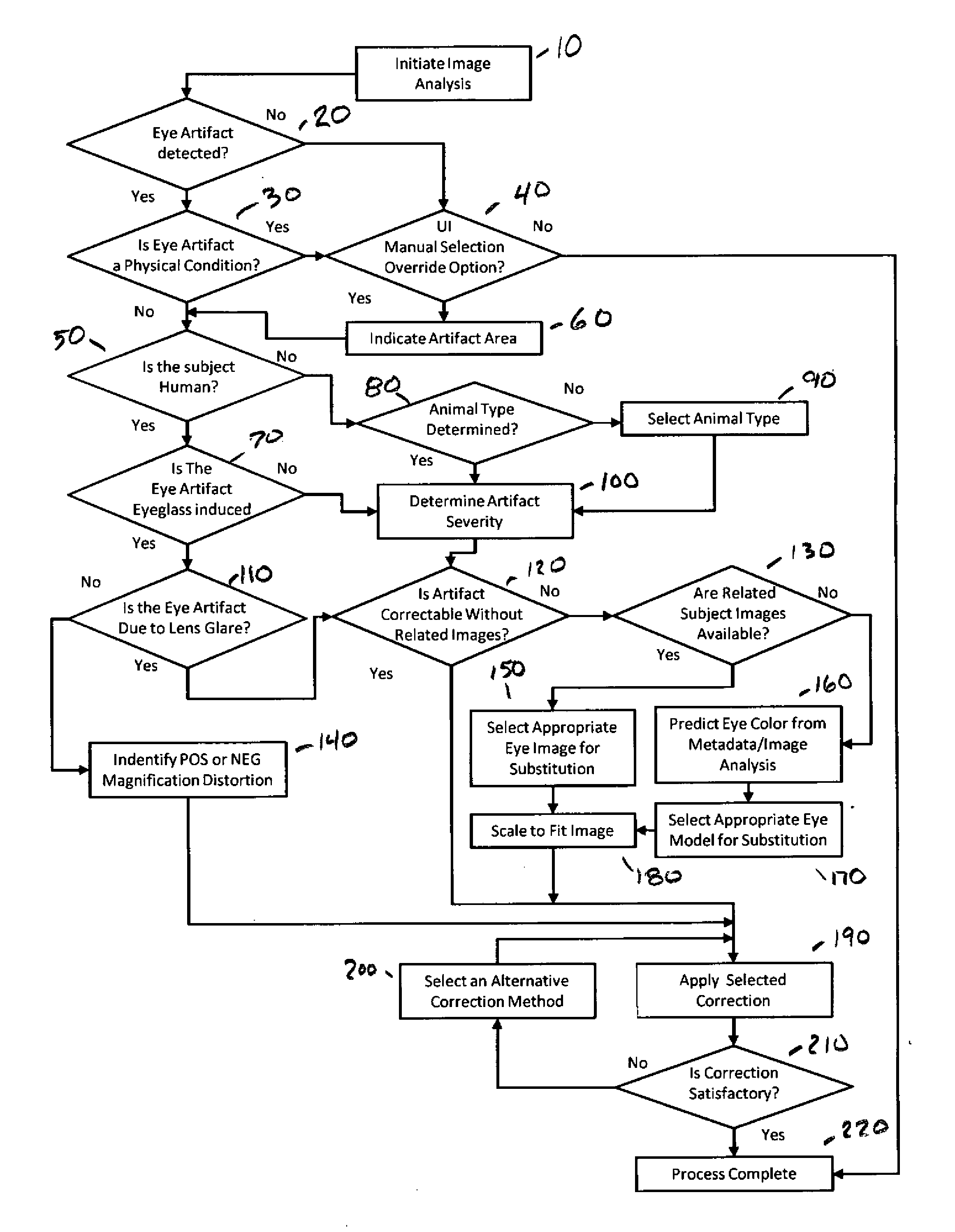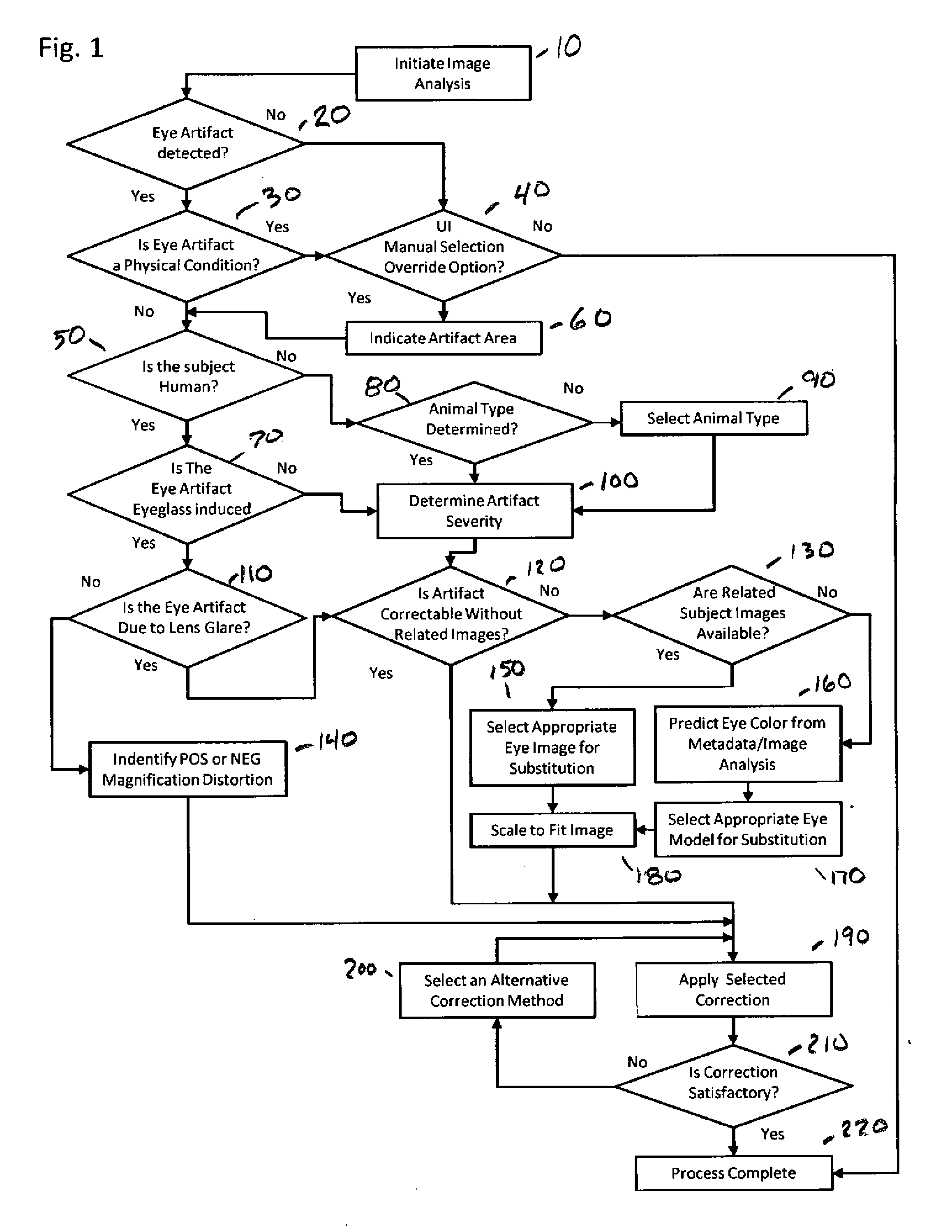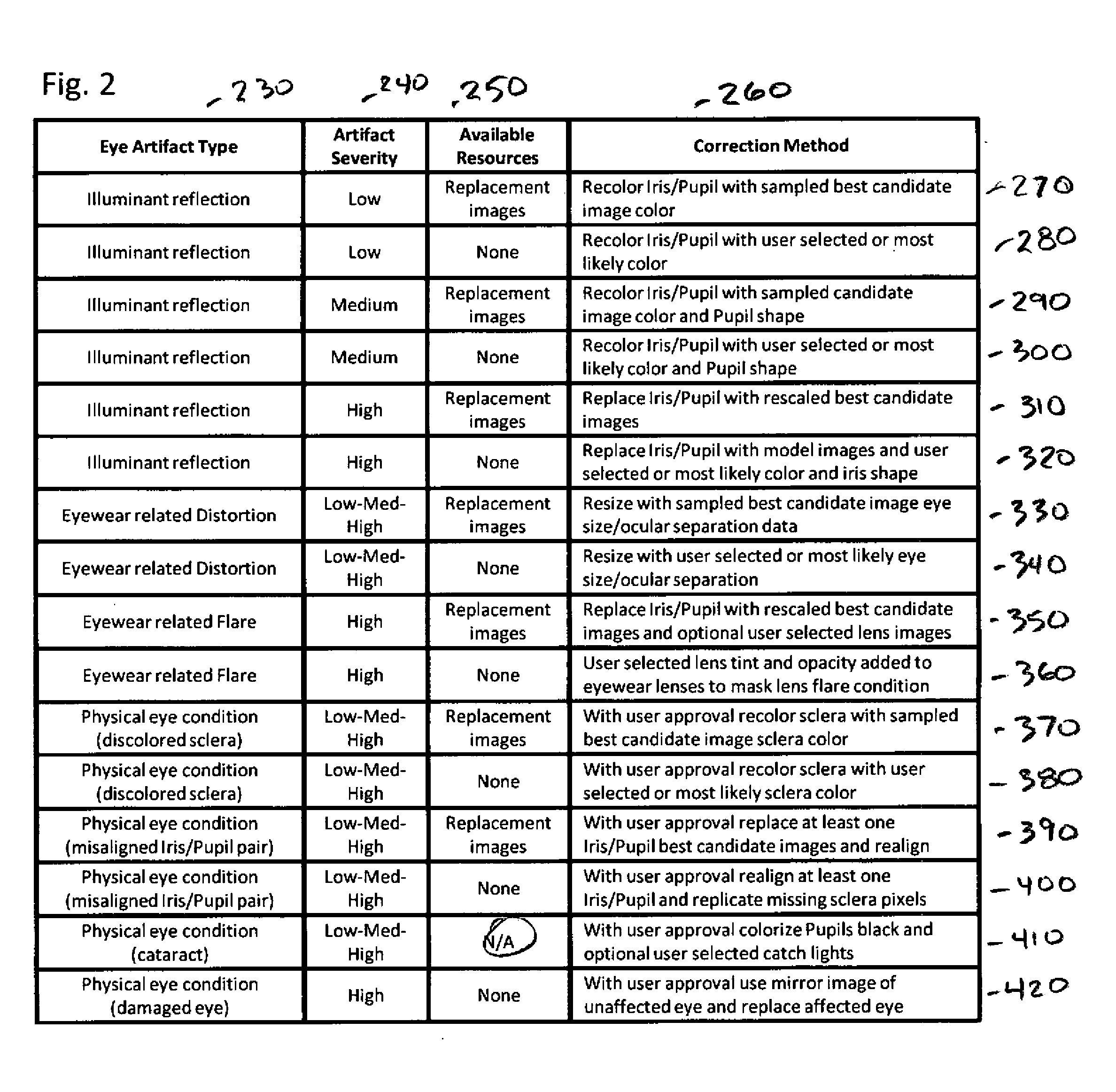Adaptable eye artifact identification and correction system
a technology of artifact identification and correction system, applied in the field of identifying and correcting eye artifacts, can solve the problems of magnification distortion, image detail, magnification distortion, and conventional techniques that typically fail to provide corrections that restore the original eye color, image detail, etc., and achieve the effect of improving the efficacy of the series of algorithms
- Summary
- Abstract
- Description
- Claims
- Application Information
AI Technical Summary
Benefits of technology
Problems solved by technology
Method used
Image
Examples
Embodiment Construction
[0034]The present invention is an adaptable eye artifact identification and correction system. There are various forms of photographic flash illumination related artifacts in photographs involving eyes. In humans, light entering the eye at a certain angle may be reflected from the optic nerve and becomes magnified causing of a white reflection or white pupil in the resulting photograph. When flash illumination is reflected off of the retinas in human eyes a red color from the blood vessels in the eyes is reflected causing the “red-eye” condition familiar to most casual photographers. In very low light situations the need for flash illumination is increased and the eye's iris opens up exacerbating both of white-eye and red-eye conditions. Compact digital cameras and cell phone cameras include xenon or LED (Light Emitting Diode) electronic flash illumination systems and often increase red-eye occurrence, frequency, and intensity because the distance between the camera's lens and flash...
PUM
 Login to View More
Login to View More Abstract
Description
Claims
Application Information
 Login to View More
Login to View More - R&D
- Intellectual Property
- Life Sciences
- Materials
- Tech Scout
- Unparalleled Data Quality
- Higher Quality Content
- 60% Fewer Hallucinations
Browse by: Latest US Patents, China's latest patents, Technical Efficacy Thesaurus, Application Domain, Technology Topic, Popular Technical Reports.
© 2025 PatSnap. All rights reserved.Legal|Privacy policy|Modern Slavery Act Transparency Statement|Sitemap|About US| Contact US: help@patsnap.com



